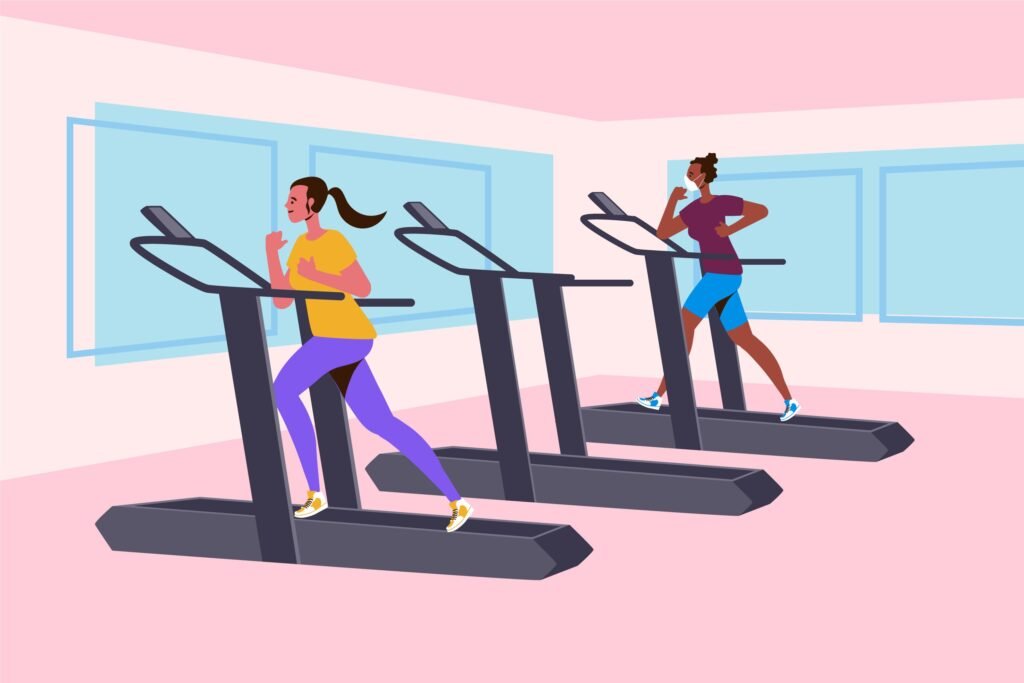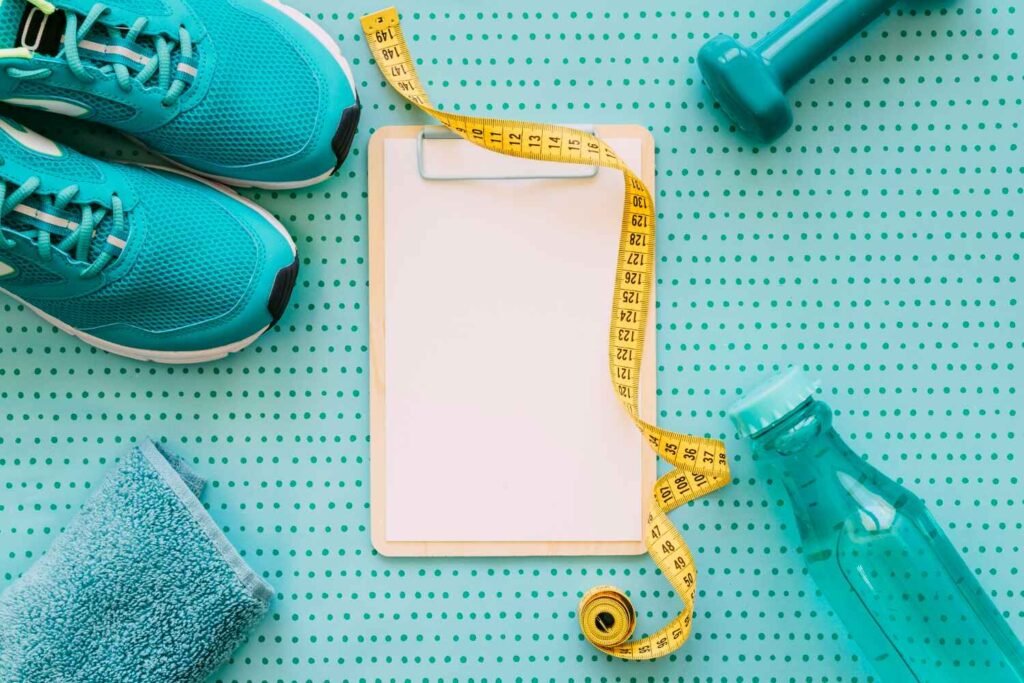
Cardio workouts are essential for improving heart health, boosting endurance, and burning calories. When it comes to cardiovascular exercise, two popular methods often come up in conversation: HIIT (High-Intensity Interval Training) and LISS (Low-Intensity Steady State). Both are effective, but which one is right for you?
In this in-depth guide, we will explore the differences between HIIT and LISS, their benefits, and which workout might be the best choice depending on your fitness goals. By the end of this post, you’ll have a clear understanding of whether HIIT or LISS fits your workout routine better.
What Is HIIT (High-Intensity Interval Training)?
High-Intensity Interval Training, commonly known as HIIT, has become a favorite in the fitness world. HIIT involves alternating between short, intense bursts of activity and periods of low-intensity recovery or complete rest.
For example, a HIIT session might include sprinting at full speed for 30 seconds, followed by 30 seconds of walking or resting. These intervals are repeated for 10-30 minutes, depending on the workout. The intensity during the active phase is typically at or near your maximum capacity, pushing your heart rate into higher zones.
Key Benefits of HIIT
HIIT has garnered popularity for several reasons, including its efficiency and effectiveness. Here are some of the primary benefits of choosing a HIIT workout:
- Time-Efficient Workouts: One of the top advantages of HIIT is the short time commitment. You can achieve significant results with just 20 to 30 minutes of HIIT, making it ideal for busy individuals who struggle to find time for longer workouts.
- Burns More Calories: Due to the high intensity of the intervals, HIIT burns more calories in a shorter time compared to steady-state cardio like LISS. This can be especially beneficial for those looking to maximize fat loss.
- Boosts Metabolism: HIIT workouts increase Excess Post-exercise Oxygen Consumption (EPOC), which means you continue to burn calories even after the workout is over. This “afterburn” effect can help with fat loss.
- Improves Cardiovascular Fitness: HIIT pushes your heart rate close to its maximum capacity, improving cardiovascular endurance and heart health over time.
- Muscle Preservation and Building: HIIT often incorporates resistance training or bodyweight exercises, making it effective for maintaining muscle mass while losing fat.
- Variety and Flexibility: You can perform HIIT with various exercises, including sprinting, cycling, bodyweight exercises, or even swimming. This versatility makes it easier to keep workouts fresh and engaging.
Types of HIIT Workouts
HIIT is highly customizable, allowing you to adjust the intensity, duration, and exercises according to your fitness level. Some common types of HIIT include:
- Tabata: This involves 20 seconds of intense activity followed by 10 seconds of rest, repeated for 4 minutes (8 rounds).
- Sprint Intervals: This could be sprinting for 30 seconds, followed by 1-2 minutes of walking or jogging.
- Bodyweight HIIT: Exercises like burpees, jump squats, and mountain climbers can be used to raise your heart rate in intervals.
What Is LISS (Low-Intensity Steady State)?
In contrast to the fast-paced nature of HIIT, LISS refers to longer-duration cardio performed at a steady, moderate pace. A typical LISS workout might involve walking, jogging, swimming, or cycling for 30 to 60 minutes at a pace where you can comfortably hold a conversation.
LISS is often seen as less intimidating than HIIT, and it’s popular among individuals who enjoy longer, more leisurely cardio sessions.
Key Benefits of LISS
Although LISS might seem less intense, it offers numerous health benefits, particularly for those looking for a low-impact, sustainable form of cardio.
- Low Impact: LISS is easier on the joints and muscles, making it an excellent option for individuals recovering from injuries, beginners, or those who need to reduce stress on their bodies.
- Improves Endurance: While HIIT focuses on short bursts of energy, LISS helps build aerobic endurance over time. This makes it beneficial for those training for long-distance events or simply looking to increase stamina.
- Fat-Burning Efficiency: During LISS, the body primarily uses fat as fuel. Although the calorie burn might be slower compared to HIIT, longer sessions tap into fat stores, helping with weight loss.
- Mental Health Benefits: LISS can have a meditative quality, especially when done outdoors. The steady pace and lower intensity allow for a more relaxing experience, which can reduce stress and improve mental clarity.
- Sustainable for Long-Term Fitness: LISS is more sustainable for long-term exercise, as it doesn’t require the same recovery time as HIIT. You can perform LISS workouts more frequently without risking burnout or overtraining.
Types of LISS Workouts
LISS exercises are simple and don’t require any complex routines or equipment. Here are some common examples of LISS workouts:
- Walking: One of the easiest forms of LISS, walking is accessible to most people and can be done almost anywhere.
- Cycling: A moderate-paced bike ride for 30-60 minutes can be a great form of LISS.
- Swimming: Swimming at a comfortable pace is an excellent full-body LISS workout.
- Elliptical: Many people use the elliptical machine for steady-state cardio, allowing for a low-impact, full-body workout.
HIIT vs. LISS: Key Differences
Now that we’ve explored both HIIT and LISS, let’s break down the key differences between these two forms of cardio.
1. Calorie Burn
- HIIT: Burns more calories in a shorter amount of time, making it ideal for people with time constraints.
- LISS: Burns fewer calories per minute but can still be effective when done for longer durations.
2. Fat Loss
- HIIT: Due to the afterburn effect (EPOC), HIIT continues to burn calories post-workout, which may lead to faster fat loss.
- LISS: LISS primarily burns fat during the workout itself. While it’s slower than HIIT, it’s effective when done consistently.
3. Time Commitment
- HIIT: Ideal for individuals with busy schedules, as sessions can be completed in 20-30 minutes.
- LISS: Requires more time per session (typically 30-60 minutes) to achieve the same calorie burn.
4. Impact on Muscles
- HIIT: Helps preserve and even build muscle mass due to the incorporation of resistance exercises.
- LISS: Does not emphasize muscle building or preservation, focusing primarily on cardiovascular endurance and fat burning.
5. Recovery Time
- HIIT: Requires more recovery time due to the high intensity and strain on muscles. HIIT should not be performed daily to avoid overtraining.
- LISS: Easier on the body, allowing for more frequent workouts without risking injury or burnout.
6. Impact on Mental Health
- HIIT: The intensity can be exhilarating but may also feel overwhelming for some individuals. HIIT is often seen as a more mentally challenging workout.
- LISS: The steady pace of LISS can feel meditative, reducing stress and promoting relaxation.
Which One Is Best for Weight Loss?
When it comes to weight loss, both HIIT and LISS can be effective, but they work in different ways.
- HIIT is better for those looking to burn calories in a shorter amount of time. The afterburn effect helps you continue burning calories long after the workout is over.
- LISS is ideal for individuals who prefer longer, more moderate workouts. It’s gentler on the body and still effective for fat burning when done consistently over time.
Many fitness experts recommend incorporating both HIIT and LISS into your routine for a balanced approach to weight loss and overall fitness.
Which One Is Best for Endurance?
For improving endurance, LISS is the clear winner. The steady pace helps build aerobic capacity, allowing you to perform longer workouts without fatigue.
HIIT, while great for improving cardiovascular health, focuses on short bursts of effort rather than long-duration performance. Therefore, if your goal is to improve your stamina for long-distance running or cycling, LISS will be more beneficial.
Which One Is Best for Muscle Preservation?
If you’re aiming to maintain or build muscle mass while doing cardio, HIIT is the better option. The short, intense bursts of activity often involve bodyweight or resistance exercises, which help stimulate muscle growth and preservation. In contrast, LISS focuses more on endurance and fat burning and is less effective for maintaining muscle mass.
Can You Combine HIIT and LISS?
Absolutely! In fact, combining both forms of cardio can give you the best of both worlds. For example, you could perform HIIT two or three times a week for calorie burn and muscle preservation and incorporate LISS on other days for endurance building and recovery



